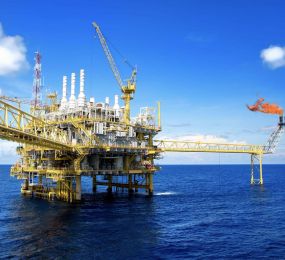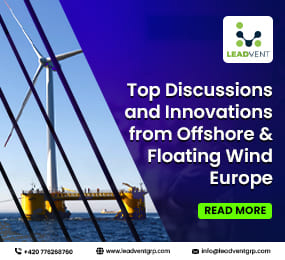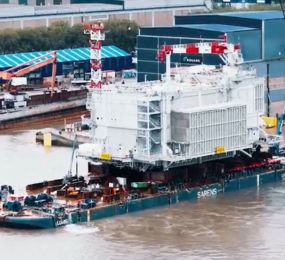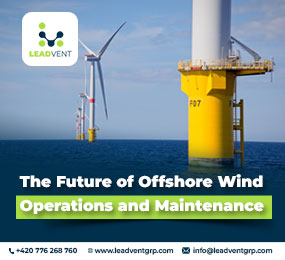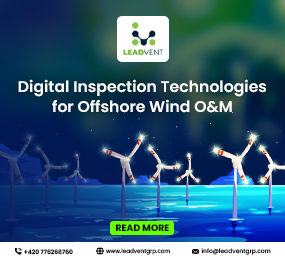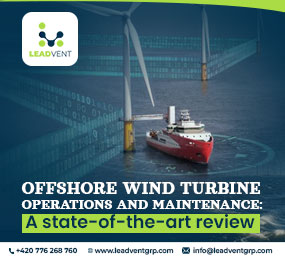Floating offshore wind energy is seen as a major source for the rapid transition of the world towards renewable energy. This technology undoubtedly has a tremendous potential to provide clean energy by making wind turbine installations possible in deeper waters—where resource availability is generally excellent—on account of increased wind and better consistent wind resource availability. Nevertheless, the unique challenges posed by floating offshore wind farms concerning operation and maintenance (O&M) require specially prepared methods to ensure their efficiency and longevity:
Challenges to the Operation and Maintenance of Floating Offshore Wind Farms
The powerful oceanic conditions experienced by offshore wind turbine maintenance, which involve high wave motions and strong currents, saltwater conditions are corrosive. These create the clearest problems with increasing the wear and tear on the turbine parts and generating maintenance demand.
- Adverse Conditions of Complex Mooring and Anchoring Systems: Floating turbines rely on sophisticated mooring lines and anchors to maintain their position. Unlike fixed-bottom turbines, floating turbines face very complex mooring and anchoring systems. Therefore, their inspection and maintenance are necessary at regular intervals to avoid any turbine shift or instability.
- Accessibility Issue: Floating wind farms are commonly outside the 12 nautical mile limit, making it hard for maintenance crew members to reach the structures. Those situations are worsened by bad weather, hence complicating normal inspection and emergency repairs.
- Dynamic Structural Loads: Effective sea motion places dynamic stresses upon the turbines and their floating platforms. These signs can be caught fairly early; hence, fatigue in the structure must be monitored to avoid sudden breakage.
Innovative Solutions for Effective O&M
Challenging as it may seem, the industry has been employing some new methods to meet offshore wind maintenance challenges:
- Advanced Monitoring Systems: Under a real-time monitoring technologies implementation, the turbine components can continue to serve generator operators with information about their health. Then, sensors detect anomalies in early stages that allow preemptive maintenance and eliminate unplanned downtime.
- Robotics and Autonomous Vehicles: Appropriately using AUVs/drones for inspection eliminates the requirement of human visits during hazardous atmospheric conditions. These two high-technology tools provide precise inspections of the turbine blades, mooring lines, and sub-sea structures.
- Digital Twins: Digital twins offer virtual copies of physical assets and simulations for various operations scenarios. This predictive maintenance tool can thus then be used to foresee possible issues as well as optimise maintenance scheduling, increasing reliability and reducing costs.
- Specialised Maintenance Vessels: Dynamic positioning systems supplemented with motion-compensated platforms make it easier, safer, and more efficient for crews to access turbines—even during adverse sea states.
Examples of Case Studies That Highlight Strategies
Hywind Scotland: As the world's first commercial floating wind farm, Hywind Scotland has also already been innovating many O&M practices. This project made use of high-end condition monitoring systems, most of which provide real-time performance data against the turbines, thereby offering speediness in responding to offshore wind maintenance needs. Another innovation, the use of AUVs for underwater inspections, led to fewer diving activities and increased safety and efficiency.
Kincardine Offshore Wind Farm: Off the coast of Aberdeen in Scotland, Kincardine has the most extensive digital twin framework. The digital twin simulates how the environmental forces impact offshore wind turbine maintenance to facilitate maintenance planning and energy output optimisation. Thus, the operational disruptions are fewer, and the turbine components last longer due to this introduction of the digital twins.
Know About the 4th Annual Offshore Wind Operations and Maintenance Forum 2025
This is an offshore wind energy event happening next March 11, 2025, where several industry professionals are expected to come together to discuss and find solutions to some of the challenges and innovations facing the O&M of floating offshore wind farms.
Location: Amsterdam, Netherlands
Key Issues:
• Emerging predictive-maintenance technologies
• Robotics and autonomous systems integrated in O&M
• Examples of successful O&M strategies
• Collaborative approaches to solving logistical challenges
It is an opportunity for attendees to meet and exchange ideas with experts, participate in workshops, and see firsthand some of the most revolutionary solutions in offshore wind O&M. More details and registration can be found on this offshore wind energy event site.
Conclusion
Unlike the operations and maintenance of traditional offshore wind farms, those related to floating offshore wind maintenance farms pose extraordinary challenges. The overcoming great extremes of moisture and damage commotion made possible by naturally endowed sea states sometimes exposed complex mooring systems and relatively less accessible ports of entry. However, the advances made in such monitoring technologies as those employed in robotics and digital twins and specialised maintenance strategy deployment are progress in the improvement of the reliability and efficiency of these renewable energy assets. The Offshore Wind Operations and Maintenance Forum - 2025, is crucial in promoting innovations while setting the best approaches around to ensure floating offshore wind stays the backbone for future sustainable energy solutions.
FAQs
What causes floating offshore wind turbines to be different from fixed-bottom turbines?
They are designed to float above the sea surface. Floating offshore wind turbines are scaled on buoyant platforms docked to the seabed, allowing operation in waters too deep for fixed-bottom foundations.
Why is upkeep more difficult for floating offshore wind farms?
The ocean's dynamic environment subjects floating turbines to constantly moving, very rough conditions, creating access difficulty for maintenance and quickened wear on components.
How do digital twins maintain floating wind turbines?
Digital twins provide virtual models of physical assets that would allow predictive analysis and proactive maintenance.



